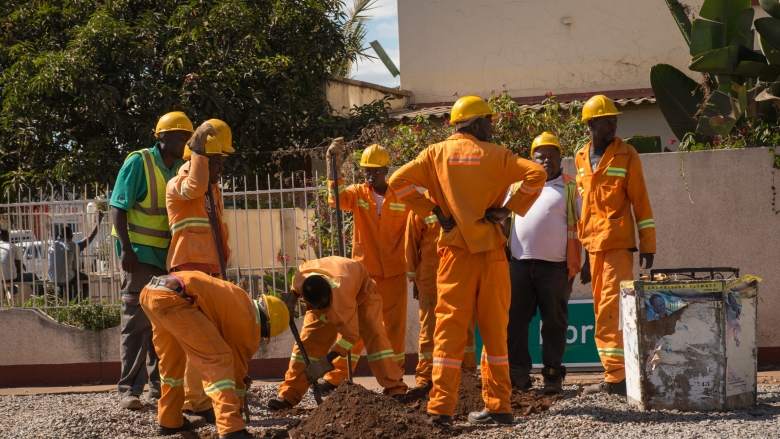Challenge
On 16 March 2019, the eastern parts of Zimbabwe were hit with heavy rains and strong winds as Cyclone Idai made landfall. Cyclone Idai caused flash floods and left in its trail massive destruction of infrastructure and livelihoods, affecting approximately 270,000 people and displacing almost 60,000. It is recorded as the most devastating natural disaster to occur in the country and the extent of damage caused in Chimanimani and Chipinge districts of Zimbabwe was unprecedented. In April 2019, the World Bank and the Government of Zimbabwe (GoZ) undertook a joint exercise to assess the losses and damages caused by Cyclone Idai in Zimbabwe. The outcome of this exercise would form the foundations for a strategy for post Cyclone Idai immediate recovery interventions and longer-term restoration of livelihoods and resilience building.
Approach
The ZIRP is a coordinated multi-sector project implemented by the United Nations Office for Project Services (UNOPS) and leveraging the implementation and sector experience of the World Food Program (WFP), Food and Agriculture Organization (FAO), United Nations Children Fund (UNICEF), World Health Organization (WHO), and the International Organization for Migration (IOM). This ‘One Project, One Team’ approach facilitates active coordination and planning across organizations and components, providing sustainable solutions by combining interventions across sectors to reduce vulnerability, catalyze recovery of productive assets, food production, and livelihood systems in the Cyclone Idai affected areas.
Results
The Project became effective in July 2019, with the immediate support and early recovery component delivered almost fully within the first year. To date, 239,324 beneficiaries have received food assistance, 54,508 beneficiaries benefited from agricultural inputs and livestock vaccines and services, 19,076 children benefited from rehabilitated community schools and education services, and 5,776 individuals were engaged in employment to rehabilitate community assets. Targeted community rehabilitation interventions in irrigation, water and sanitation services, community roads and risk mitigation infrastructure are in planning stages.
82,160 people benefited from comprehensive health services (including maternal, neonatal, child health as well as community case management for common conditions, like malaria). 223,000 people received COVID-19 preventative and hygiene messaging, with PPE kits delivered to 34 health centers.
